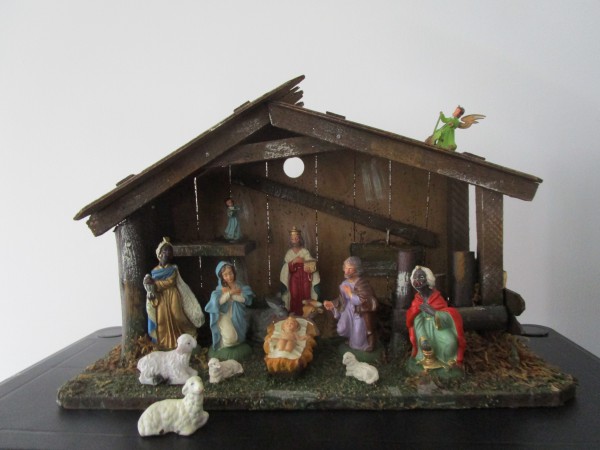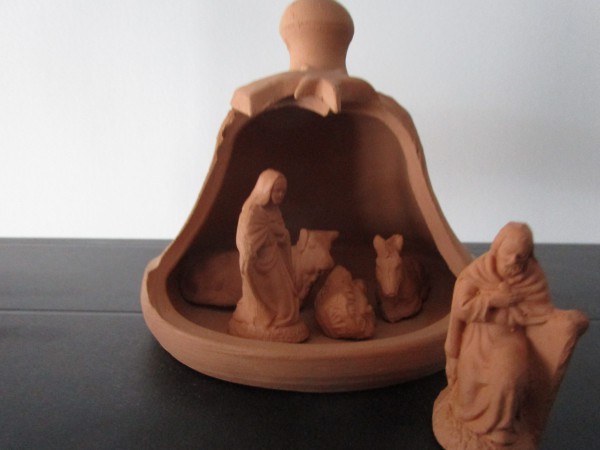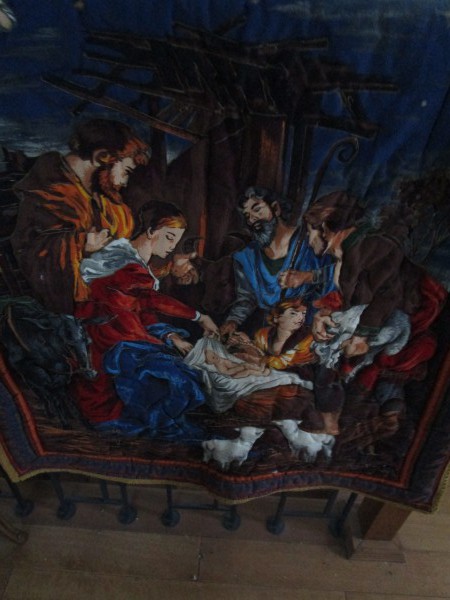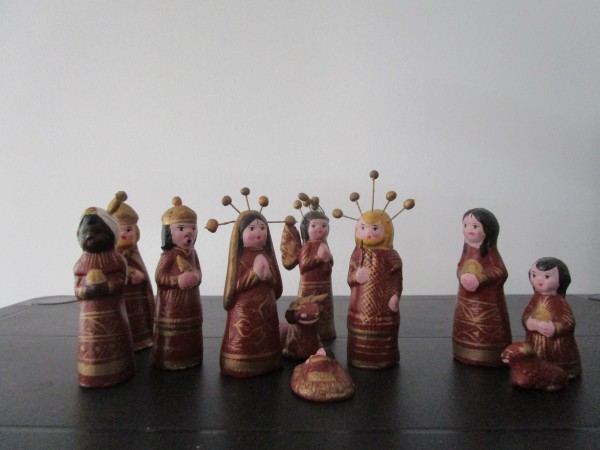The history of the nativity scene
Artists’ depictions of Jesus’ birth date back to Christiannity’s beginnings. The first nativity scenes appeared in the 13th century. The Jesuists turned them into evangelization tool as a result of the Counter-Reform, in the 16th century. They apperead in homes in the 17th century.
”Democratization” of the nativity scene began in the 19th century, when new materials and processes made them more affordable. The 20th century has seen the nativity scene take many forms : from Inuits to Peruvians to Polynesians , characters and backgrounds adapt to various cultures.
Beginnings (1st-15th centuries)
The oldest artistic depictions of Jesus’ birth, church frescoes, appeared in the second and third centuries. December 25th was chosen as the date of the birth’s commemoration in the fourth century, and the practice spread to the whole Christian world.
”Mysteries” appeared around the end of the first millenium. They were plays on various episodes in teh Bible, including Jesus’ birth First shown in churchs, they moved to public squares and streets. By the end of the Middle Ages, mysteries could last several weeks and involve dozens of actors.
When, according to legend, Saint Francis of Assisi re-enacted the Nativity story at Christmas 1223 in Greccio (Italy), he continued an old tradition. His novelty was a ”natural” setting (a grotto) and live animals. The innovation spread with the franciscan movement, mainly in Italy and southern France.
Soon, terracotta and wooden nativity scenes appeared alongside those living nativity scene. This made them available to te faithful for a longer period of time. The oldest known ”non-living” nativity scene was made in Germany, At the end of the 13th century. Mechanical nativites appeared in the 15th century.
bAROQUE AND NEAPOLITAN NATIVITIES (16th-18th centuries)
The nativity scene as we know it today appeared in the 16th century. Jesuits began the making of smaller nativities, cheaper to make and easy to carry around. They became catechism tools, in the spirit of the catholic Counter-Reform.
From the second half of the 16th century on, nativity scenes became more frequent in churches, and entered private homes. In the 18th century, Naples was at the centre of a nativity frenzy. Nobles, rich merchants and even the royal family upstaged each other with elaborate baroque nativities. The best sculptors were employed, and the elite’s mansions were opened to display collections. Characters depicting local population and occupations joined religious ones.
Democratization and adaptations (19th-21st centuries)
The French Revolution and its de-christianization campaign chased the nativity scenes from public spaces. Unitl their return to churches and street corners, they took refuge in private homes, The famous santons appeared in Provence,.
Mass production of nativity characters, in painted plaster, appeared in the 19th century. Religious articles merchants, then department stores contributed to their wide availabilty, which led to nativity scenes appearing in a growing number of households. The range of materials being used became wider.
Many variations on the theme of the Nativity now exist. Nothing new : each European society had adapted the nativityscene and its characters. The nativity scene has followed Western missionaries and colonizers. In turn, artists and craftmakers from around the world depict the Nativity story in their own way. With globalization, one can now find nativity scenes from Asia, Africa, Latin America alongside European and North American ones.
Even popular culture gets involved : Peanuts, a selfie-taking Saint Joseph, the Simpsons, Star Wars, the Klingons… We are far from Greccio.




